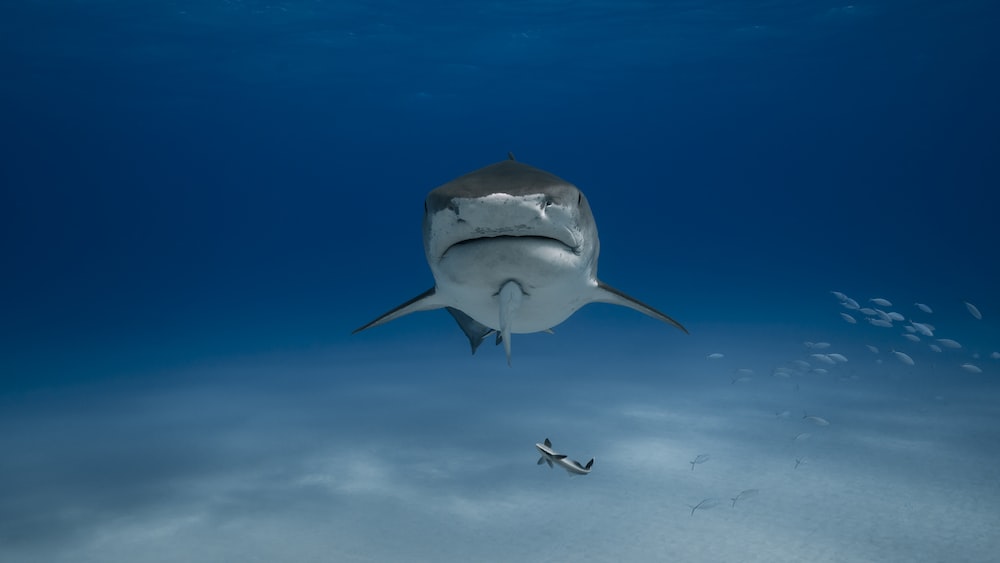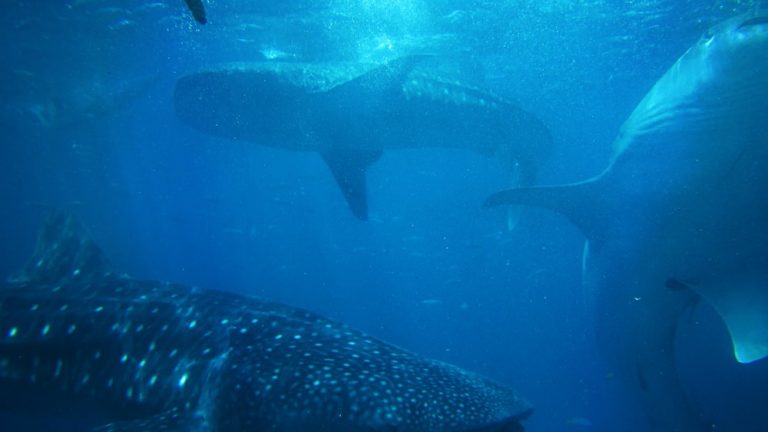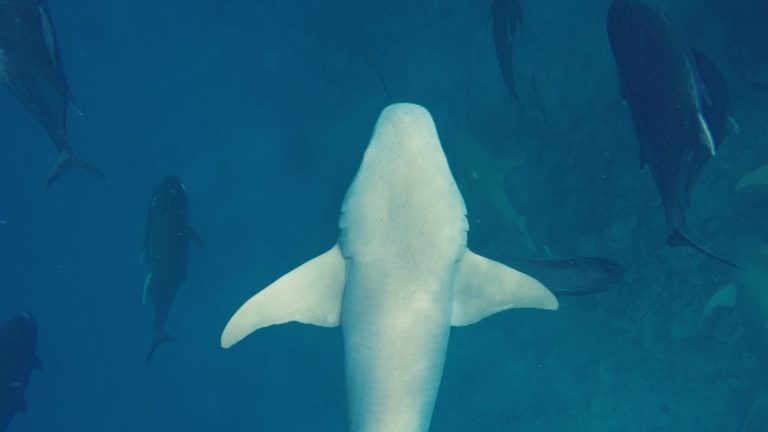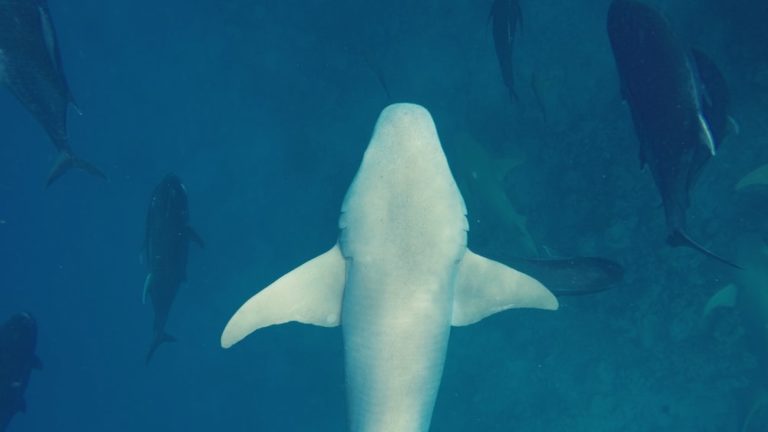How Long Do Great White Sharks Grow: Unveiling Their Growth
How Long Do Great White Sharks Grow: Unveiling Their Growth
Dive into the depths of the ocean with me, and let’s unveil the mysteries of the great white shark. These formidable apex predators have long captured the imagination of marine life enthusiasts and conservationists alike. How long do great white sharks grow, and what oceanic secrets govern their impressive size?
Key Points:
- Great white sharks are born ready to thrive, armed with a full set of teeth and an innate predisposition for predation.
- Juvenile great whites practice the art of the hunt, honing skills that will ensure their supremacy in the oceanic hierarchy.
- Females reach full maturity at around 15 years, while males reach it by around 10 years.
- Genetics and environmental conditions influence the growth potential of great white sharks.
- Great white sharks can continue to grow throughout their lives, albeit at a slower rate once maturity is reached.
- Overfishing affects the growth of great white sharks by reducing the availability of their prey, impeding their ability to reach their full size potential.
The tale of the growth of a great white shark is more than just a curiosity; it’s a journey through a life fraught with survival, genetic blueprints, and sharks navigating the big blue. In this blog, we’ll explore each stage of their life cycle, all the while sprinkling our expedition with a pinch of marine insight. For the whites of the sea, each day is an odyssey, and every inch they gain a story unto itself.
From birth to their colossal potential, we’ll scrutinize the growth of these majestic creatures, striding through science without wading into the weeds. Now, adjust your snorkels and prepare to submerge into the awe-inspiring life of the ocean’s most iconic giants.
The Life Cycle of Great White Sharks
For the great white shark, life is an epic saga that begins in the open ocean. Each phase of the great white’s life is a riveting tale of growth, adaptation, and survival, set against the vast backdrop of the sea’s intricate ecosystem.
Birth and Early Development
Fresh into the world, the great white pups burst forth with a primal instinct to thrive. Yet, their early development is as clandestine as the ocean depths; much of these pioneers’ beginnings remain shrouded in mystery. Unfettered by the care of a mother, each pup must navigate the perils of the sea alone from the very moment of birth.
It’s believed that these sharks are born ready, armed with a full set of teeth and an innate predisposition for predation. Environmental cues and genetic programming kickstart their initial growth spurt. This crucial time sets the stage for their formidable future as one of the sea’s most impressive predators.
From the moment of birth, great white shark pups rely on their innate instincts and genetic programming to navigate the perils of the sea alone, setting the stage for their future as formidable predators.
Juvenile Growth Phase
As they shift to the juvenile growth phase, these young sharks start to assert their presence in the ocean. Here, they grow robust, learning to harness the currents and swells, feeding on smaller prey as they prepare for future glories. Growth during this phase is swift, propelling them towards their destiny as mature predators.
Juvenile great whites practice the art of the hunt, honing skills that will soon ensure their supremacy in the oceanic hierarchy. This is a time for growth, but also for learning – a delicate dance with nature that demands both patience and audacity.
The Maturation Process
Entering the maturation process heralds a new epoch in the great white shark’s life. This is when these leviathans truly begin to unfurl their might, stockpiling muscle and mass as they glide toward adulthood. Yet amidst this rush of growth, maturity is a gradual ascent, dappled with the nuances of survival.
For females, reaching full maturity could take as long as 15 years, while males might get there a bit quicker, typically by the age of 10. Both, however, share the wheel of time that sees them slowly but surely become the sovereigns of the sea.
The maturation process of great white sharks is a gradual ascent, with females reaching full maturity in about 15 years and males in about 10 years.
Factors Influencing Growth in Great White Sharks
The tale of how long great white sharks grow is woven with a myriad of factors that nudge the tape measure along. Understanding these is key to unlocking the secrets behind their size and survival.
Genetics and Growth Potential
The cloak of genetics wraps tightly around the growth potential of great white sharks. Encoded within their DNA are the ancestral whispers of size and strength, passed down through generations of sharks. These genetic blueprints lay the foundation of what’s possible, setting each individual’s maximum growth potential.
Yet, genetics is only part of the story. Nature’s orchestration ensures that no two sharks are entirely alike, weaving the diversity that makes the population resilient and adaptable. Our journey into understanding their growth is as much about the diversity of their DNA as it is about the singular path each shark takes.
Diet and Nutritional Intake
When contemplating how long great white sharks grow, the conversation naturally drifts to diet. The ocean’s larder is open, and for the growing shark, table manners are abandoned in favor of voracious feeding. Rich in proteins and fats, their marine banquet fuels their expansion, turning feasts into inches and pounds.
With a dietary regimen that’s both opportunistic and refined, these predators target prey that ensures a nutritional bounty – from sea lions to tuna, each morsel is a brick in the edifice of their growth. Their predatory expertise is as much about survival as it is about savvy dining choices, building their formidable frame with each successful hunt.
Great white sharks grow by consuming a diet rich in proteins and fats, targeting prey that ensures a nutritional bounty and using each successful hunt to build their formidable frame.
Habitat and Environmental Conditions
The domes of the deep – habitats stretching beneath wavering waves – also play a crucial role in how long great white sharks grow. Habitat diversity, from the sun-blessed shallows to the chilling depths, grants these sharks an arena for growth and an environment that challenges and bolsters their progress.
Environmental conditions echo through their growth rings, with factors like water temperature and availability of prey shaping their development. As we observe these majestic creatures, their habitat preferences offer insight into the delicate balancing act of nature that dictates their growth trajectory.
Growth Patterns of Great White Sharks
In dissecting growth patterns of great white sharks, we thread together the variegated beads of their intense existence. Each shark etches its own growth curve in the sand of time, an indelible mark of its life’s journey.
Average Size at Different Life Stages
Through the looking glass of growth, great white sharks reveal a textured tapestry of sizes that shift with the passing of years. At birth, these sharks are already considerable compared to other fish, usually measuring between 4 to 5 feet long. Their subsequent growth is a steady accumulation of power and prowess.
As juveniles, they can reach lengths of around 7 to 10 feet, increasingly casting intimidating shadows on the ocean floor. Their formidable silhouette continues to expand, often leaving human onlookers in awe of their magnitude, eager to understand every inch of their majestic ascent.
Life is like the growth of a great white shark, steadily accumulating power and prowess as it expands, leaving us in awe of its magnificent ascent.
Maximum Size Potential
What about the ceiling? The upper echelons of growth where legends are born and records are set? For great white sharks, maximum size potential is a story told in whispers and waves. Mature females, in particular, might soar to lengths of over 20 feet, should the ocean deal a favorable hand.
However, such sizes are not a guaranteed destination but rather a possibility sculpted by optimal conditions, a confluence of factors that fuel their expansion to magisterial dimensions. In these rarefied waters, some whites become giants, etching their bulk into the annals of marine history.
Measuring the Growth of Great White Sharks
Understanding how long great white sharks grow demands meticulous efforts in documenting their physical development. It’s an underwater measuring tape extravaganza, where marine biologists become tailors, gauging the sleek suits of these ocean giants from snout to tail.
Scientific Methods of Measurement
Measuring these majestic creatures often involves tagging and tracking. Tags are placed to record growth over time, allowing scientists to plot a shark’s size against its age. Direct measurements are also taken when possible, typically of young sharks or specimens that have been accidentally caught in fishing nets. Laser photogrammetry has become a contemporary darling, enabling researchers to estimate a shark’s length by using photographs with laser points that provide a size reference.
Tracking and measuring sharks’ growth through tagging, direct measurements, and laser photogrammetry is crucial for understanding their development and population dynamics.
Challenges in Accurate Size Estimation
Finding an agreeable shark volunteer for a quick measure-up can be as rare as a serene sea during a storm. These creatures are not ones to stick around for a fitting, so scientists are faced with significant challenges.
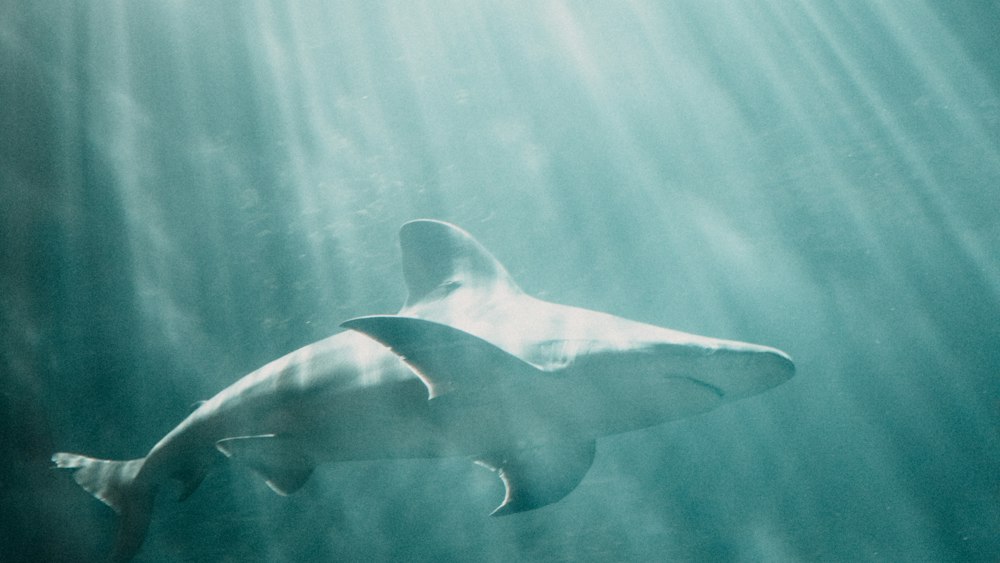
- Visual misidentification and photographic distortion can skew perceptions of size.
- Environmental conditions, such as water clarity, further cloud our efforts to pin down their dimensions with a high level of accuracy.
- Moreover, these apex predators exhibit great variability in growth rates, turning each great white into a unique puzzle of jaws and genes, waiting to be solved.
Conservation and the Impact on Growth
Linking the dots between conservation efforts and great white shark growth is essential. These sea sentinels have their life stories etched into their size, making every inch a testament to the health of our oceans.
Threats to Great White Shark Populations
Great white sharks face a sea of threats, each as menacing as the next:
- Overfishing depletes their prey and increases the risk of bycatch.
- Habitat destruction impairs crucial breeding and nursery grounds.
- Pollution poses silent but deadly risks to their marine abode.
The heartiness of these predators speaks volumes about the condition of their habitat, and current trends wave red flags that deserve our full attention.
Conservation Efforts and Growth Research
As stewards of the sea, marine conservationists are taking strides to ensure the future growth of great white sharks.
- Research focusing on growth patterns provides insight into the well-being of marine ecosystems.
- Protected marine areas have become sanctuaries where sharks can roam freely, away from the threats of fishing lines and nets.
- Furthermore, public awareness campaigns are key to reducing demand for shark-derived products.
Each initiative beckons hope for not only preserving these majestic creatures but also for understanding the answer to “how long do great white sharks grow?”
Marine conservationists are working to protect great white sharks by studying growth patterns, establishing protected areas, and raising public awareness about the importance of preserving these majestic creatures.
FAQs
1. What is the average size of an adult great white shark?
The average size of an adult great white shark is typically between 4 and 6 meters, though some individuals can grow larger, making size variation as grand as the ocean itself.
2. At what age do great white sharks reach their full size?
Great white sharks reach their full size at around 15 to 20 years of age. However, this can depend on numerous environmental and biological factors.
3. Can great white sharks continue to grow throughout their lives?
Age brings wisdom and length in the world of great white sharks, as they can continue to grow throughout their lives, albeit at a slower rate once maturity is reached.
4. How does overfishing affect the growth of great white sharks?
Overfishing affects the growth of great white sharks by reducing the availability of their prey, hence impeding their ability to reach their full size potential.
Conclusion
Our journey through the depths has revealed not just how long great white sharks grow, but also the ocean of factors that influence their stature. As marine life aficionados and conservers of the blue wilderness, it’s our responsibility to ensure these creatures can grow and thrive.
- The answer to “how long do great white sharks grow” is a complex one, intertwined with the conservation efforts we champion.
- Our actions above the waves make a splash in the lives of these oceanic titans beneath the surface.
So, let’s keep our fins on the pulse of marine conservation and continue to be the voice for the voiceless swimmers of the deep. Dive safely, and until next time, keep those tails wagging for adventure and eco-awareness. Signing off with a wave, Jasper Flynn.

